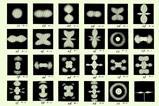Philip Ball examines the seductive power of burning saltwater
Take a test tube of sea water and hit it with radio waves. Then light a match - and watch it burn. Flickering over the mouth of the tube is a yellow-white flame, presumably due to the combustion of hydrogen.
When John Kanzius, an engineer in Erie, Pennsylvania, did this last year, the local TV networks were all over him. ‘He may have found a way to solve the world’s energy problems,’ they said. The clips duly found their way onto YouTube, and soon the whole world knew about this apparent new source of ‘clean fuel’.
I wrote then in Nature that Kanzius’s claims ‘must stand or fall on the basis of careful experiment’. Now, it seems, those experiments have begun. Rustum Roy, a materials scientist at Pennsylvania State University with a long and distinguished career in the microwave processing of materials, has collaborated with Kanzius to investigate the effect. The pair, along with Roy’s colleague Manju Rao, have just published a paper describing their findings in Materials Research Innovations,1 a journal that advertises itself as ‘especially suited for the publication of results which are so new, so unexpected, that they are likely to be rejected by tradition-bound journals’.
Materials Research Innovations, of which Roy is editor-in-chief, practises what it calls ‘super peer review’, which ‘is based on reviewing the authors, not the particular piece of work. the author (at least one) shall have published in the open, often peer-reviewed literature, a large body of work. The only other criterion is that the work be ‘new, a step-function advance, etc.’
I’m not complaining if Roy’s paper has had an easy ride, however. On the contrary, given the wide interest that Kanzius’s work elicited, it’s very handy to see the results of a methodical study without the long delays that such efforts are often likely to incur from other, more cautious journals under the standard peer-review model. Of course a review system like this is open to abuse (aren’t they all?), but the new paper suggests there is a useful function for the journal’s approach.
Mystery gas
The experimental details in the paper are simple and to the point. Put an aqueous solution of as little as 1 percent sodium chloride in a Pyrex test tube; expose it to a 300 Watt radio frequency field at 13.56 MHz; and ignite the gas that comes from the tube. Note that the inflammable gas was not collected and analysed, but simply burnt.
The effect may sound surprising, but it is not unprecedented. In 1982, a team of chemists at Western Illinois University reported the room-temperature decomposition of water vapour into hydrogen peroxide and hydrogen using radio frequency waves with around 60 percent yield.2 They too used precisely the same frequency of 13.56 MHz - no coincidence really, since this is a common frequency for radio frequency generators. And in 1993 a Russian team reported the apparent dissociation of water into hydrogen and hydroxyl radicals using microwaves.3 Neither paper is cited by Roy et al.
Free lunch
If water can indeed be split this way, it is intrinsically interesting. That it seems to require the presence of salt is puzzling, and offers a foothold for further exploration of what’s happening.
But of course the story neither begins nor ends there. The TV reports make it plain what was in the air: energy for free. None of them thought to ask what the energy balance actually was, and Kanzius apparently did not offer it. Roy et al now stress that Kanzius never claimed he could get out more energy than was put in; but given the direction the reports were taking, it seems not unreasonable to have expected an explicit denial of that.
Still, we have such a denial now (in effect), so that should put an end to the breathless talk of solving the energy crisis.
The real question now is whether this process is any more energy-efficient than standard electrolysis (which has the added advantage of automatically separating the two product gases). If not, it remains unclear how useful the radio frequency process will be, no matter how intriguing. Sadly, the present paper is silent on that matter too.
There seems scant reason, then, for all the media excitement. But this episode is a reminder of the power of visual images - here, a flame dancing over an apparently untouched tube of water is a seductive sight to a culture anxious about its energy resources. It’s a reminder, too, of the force of water’s mythology, for this is a substance that has throughout history been lauded as a saviour and source of miracles.
References
1 R Roy et al, Mater. Res. Innovations, 2008, 12, 3 (DOI: 10.1179/143307508/270875)
2 S Roychowdhury et al, Plasma Chem. Plasma Process., 1982, 2, 157 (DOI: 10.1007/BF00633131)
3 V L Vaks et al, Radiophys. Quantum Electron. 1994, 37, 85 (DOI: 10.1007/BF01039308)

















No comments yet